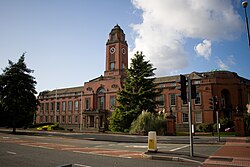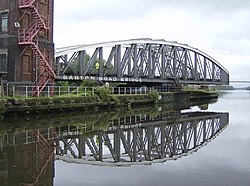| All Saints' Church | |
|---|---|
 | |
 All Saints' Church | |
| 53°28′22″N2°21′07″W / 53.472696°N 2.351898°W | |
| Location | Urmston |
| Country | England |
| Denomination | Roman Catholic |
| Religious institute | Order of Friars Minor Conventual |
| Website | thegreyfriars.org/barton |
| History | |
| Status | Active |
| Architecture | |
| Architect | E. W. Pugin |
| Style | Gothic Revival |
| Completed | June 1868 |
| Construction cost | £25,000 |
| Administration | |
| Diocese | Salford |
All Saints' Church is a Roman Catholic parish church situated between Dumplington and Barton upon Irwell, near Urmston, in Trafford, Greater Manchester, England. The church was constructed between 1867 and 1868 and was designed by E. W. Pugin in the Gothic Revival style for Sir Humphrey de Trafford. [1] [2] It is situated on Redclyffe Road, close to the Manchester Ship Canal. The church is a Grade I listed building and considered to be an example of Pugin's best work, [1] according to Nikolaus Pevsner, "the masterpiece of [Pugin's] life, without any doubt." [3] It has been served by priests from the Conventual Franciscans since 1928. [3]
















